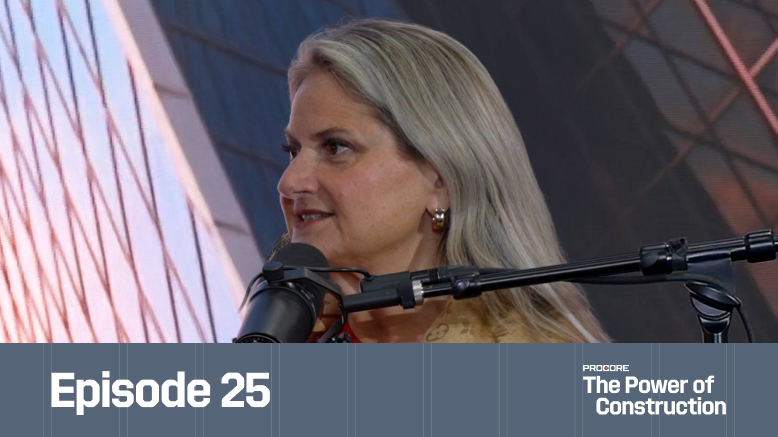— 5 min read
Repeatability Redefined: Leveraging Data for Smarter Renewable Energy Construction


Last Updated Jul 16, 2025

Chris Alex
Enterprise Solution Specialist, Energy
Chris Alex currently works as an Industry Specialist on Procore's Energy team. He brings 18 years of experience working in the upstream and midstream segments of oil and gas. In addition to that, Chris has consulted on and led project development within the Energy Transition, specifically direct lithium extraction, geothermal, CCUS, and industrial electrification. His roles have spanned from field engineer to operations manager, and business development. Chris studied Geology at the University of Texas of the Permian Basin.

James Hamilton
Writer & Producer
85 articles
James Hamilton is a writer based in Brooklyn, New York with experience in television, documentaries, journalism, comedy, and podcasts. His work has been featured on VICE TV and on The Moth. James was a writer and narrator for the show, VICE News Tonight, where he won an Emmy Award and was nominated for a Peabody Award.
Last Updated Jul 16, 2025

The concept of "repeatability" in construction is more than simply, “If it works, do it again.” It’s about knowing what exactly worked, why it worked and how to continuously replicate and improve upon that success. That type of strategic understanding requires a precise and comprehensive approach to data.
Collecting and analyzing data on various phases of projects — such as site selection, resource allocation and operational efficiency — can help to streamline processes, minimize waste and errors, make the most informed decisions possible and reduce risk dentifying potential issues and implementing mitigation strategies ahead of time.
Here are five mindsets needed to master data-driven repeatability, with a focus on renewable energy construction.
Table of contents
1. Embrace predictive analytics.
Predictive analytics uses data from past projects to help make informed decisions on future projects, such as helping with the abilities to optimize site selection, improve resource management and prevent and manage risk.
During site selection, teams identify ideal sites by using data on weather patterns, permitting processes and proximity to consumption zones. Maximize performance with predictive models, such forecasting sunlight availability to determine ideal spots for solar panel placement or analyzing wind patterns to guide turbine positioning.
There's a significant behind-the-meter push driven by data center consumption that raises a two-sided question: should a data center be located in a larger city with more baseload power availability, despite high land and service costs, or should it remain remote and bear the extra grid connection expenses? Alternatively, building a microgrid is becoming increasingly popular due to its scalability and repeatability. Once a microgrid is established, its output is predictable, allowing for replication.
For instance, if you analyze all your facilities with predictive analytics and observe a steady power consumption curve, you can anticipate future needs. As components age, power usage increases.
If you're looking at 60 megawatts over the next decade, you might need to build an additional 80 to 120 megawatts to account for this increase and facility growth. Procore's (alt. Predictive) analytics help by pulling data on construction costs and efficiency, which helps with planning and optimizing future projects.

Chris Alex
Enterprise Solution Specialist, Energy
Procore Technologies
Teams can also improve overall resource management by using data to identify potential challenges, minimize downtime and manage availability and locations for materials, equipment and workers.
Data is also a powerful tool to forecast potential risks before they become issues, such as supply chain disruptions or equipment failures.
Data-driven decision making and replicable project outcomes require investing in predictive analytics training and tools. Many construction software programs help gather, store and visualize data from different departments, across various workflows and from the start to finish of every project.
2. Consolidate data to avoid silos.
Information siloes occur when data or information is isolated within a specific department, team or system. Siloed information can lead to inefficiencies, redundancies, uninformed decision-making and– when attempting to replicate outcomes– having to recreate systems and workflows.
In order to create systems to replicate success, teams need access to accurate and comprehensive data from all phases of a project, from initial planning to execution — and from different departments.
Integrating data from different parts of projects and consolidating it in one platform leads to increased collaboration and holistic decision-making. In addition, creating dashboards that visualize captured data can be used to increase efficiency and predict capital needs.
3. Refine and improve with each project.
Improvement is easiest to achieve when success has been clearly defined, often through KPIs and benchmarks based on past performance or industry standards. A clarity of goals improves the usefulness of analytics, and captured data can be used to measure progress over time.
Many tools have the capability to create project templates that can be copied for each new project, allowing for quick comparison and optimization between sites and projects.
If you have your operational statistics in a project management system linked to a project, whether or not you're managing your operations there, combining the development phase through operations into one analytic dashboard is incredibly powerful. It helps you determine how much capital you need to raise and how efficiently you can operate facilities, like those from five to nine.
I'm currently discussing this with a geothermal customer who is building their first utility-grade power plant, with a total of 11 to construct. Construction management software can highlight that the first project is likely the baseline — the most challenging one you'll ever build. Each subsequent project should improve upon the last.
Chris Alex
Enterprise Solution Specialist, Energy
Procore Technologies
4. Get granular.
For large-scale and fast-moving projects, repeatability is about reducing cost and improving efficiency without compromising quality. That requires precise data on what’s working and what needs to be improved upon. Tracking cycle times for phases and projects can help identify how workflows can be improved and the exact point breakdowns occur.
Holistic cost analysis should include information on all parts of the construction process, as well as direct and indirect costs related to a project, such as capital expenditures, operational expenses, maintenance costs and potential future upgrades.
Courses about construction.
For construction.
Unlock your career potential with our free educational courses on Health & Safety, Data in Construction, and more.
5. Plan to be adaptable.
Having reliable systems that can replicate parts of the construction process should mean that team members can better respond to the parts of projects that are uniquely challenging. Renewable energy projects often take place in remote locations with unpredictable conditions and changing regulations.
Copying project templates, using predictive analytics and being able to access up-to-date information is part of creating a foundation that helps stakeholders respond to challenges and handle uncertainties. Adaptability is made possible by high quality, real-time data analytics, which can provide insights to help pivot, problem solve and maintain project momentum.
Was this article helpful?
Thank you for your submission.
0%
0%
You voted that this article was . Was this a mistake? If so, change your vote
Scroll less, learn more about construction.
Subscribe to The Blueprint, Procore’s construction newsletter, to get content from industry experts delivered straight to your inbox.
By clicking this button, you agree to our Privacy Notice and Terms of Service.
Thank you!
You’re signed up to receive The Blueprint newsletter from Procore. You can unsubscribe at any time.
Categories:
Written by

Chris Alex
Enterprise Solution Specialist, Energy | Procore Technologies
Chris Alex currently works as an Industry Specialist on Procore's Energy team. He brings 18 years of experience working in the upstream and midstream segments of oil and gas. In addition to that, Chris has consulted on and led project development within the Energy Transition, specifically direct lithium extraction, geothermal, CCUS, and industrial electrification. His roles have spanned from field engineer to operations manager, and business development. Chris studied Geology at the University of Texas of the Permian Basin.
View profile
James Hamilton
Writer & Producer
85 articles
James Hamilton is a writer based in Brooklyn, New York with experience in television, documentaries, journalism, comedy, and podcasts. His work has been featured on VICE TV and on The Moth. James was a writer and narrator for the show, VICE News Tonight, where he won an Emmy Award and was nominated for a Peabody Award.
View profileExplore more helpful resources

Who is accountable for innovation in construction?
Everyone says construction needs to innovate—but no one agrees on who’s actually responsible for making it happen. Is it the owner? The builders? The tech vendor? Or is innovation everyone’s...

Will AI Replace ‘Paperless Builders’—or Redefine Them?
How can artificial intelligence enhance rather than replace human expertise in construction? In Episode 16, Hamzah Shanbari, Director of Innovation at Haskell and author of “The Paperless Builders,” reveals how...

How Can We Bridge the Data Gap in Construction?
In Episode 3 of The Power of Construction, Eric Whobrey, ARCO Murray’s VP of Innovation and Managing Partner joins hosts Sasha Reed and Kris Lengieza to explore the data gap...

Building a Data Development Culture for Precision & Progress
Every time a project executive or manager misses a warning sign to a jobsite slowdown or clash, that’s money left on the table. When key indicators of lagging productivity or...
Free Tools
Calculators
Use our calculators to estimate the cost of construction materials for your next project.
Templates
Find a template to help you with your construction project tasks.
Material Price Tracker
Get the latest U.S. retail prices and view historical trends for common building materials.
Glossary
Explore key terms and phrases used in the industry.
